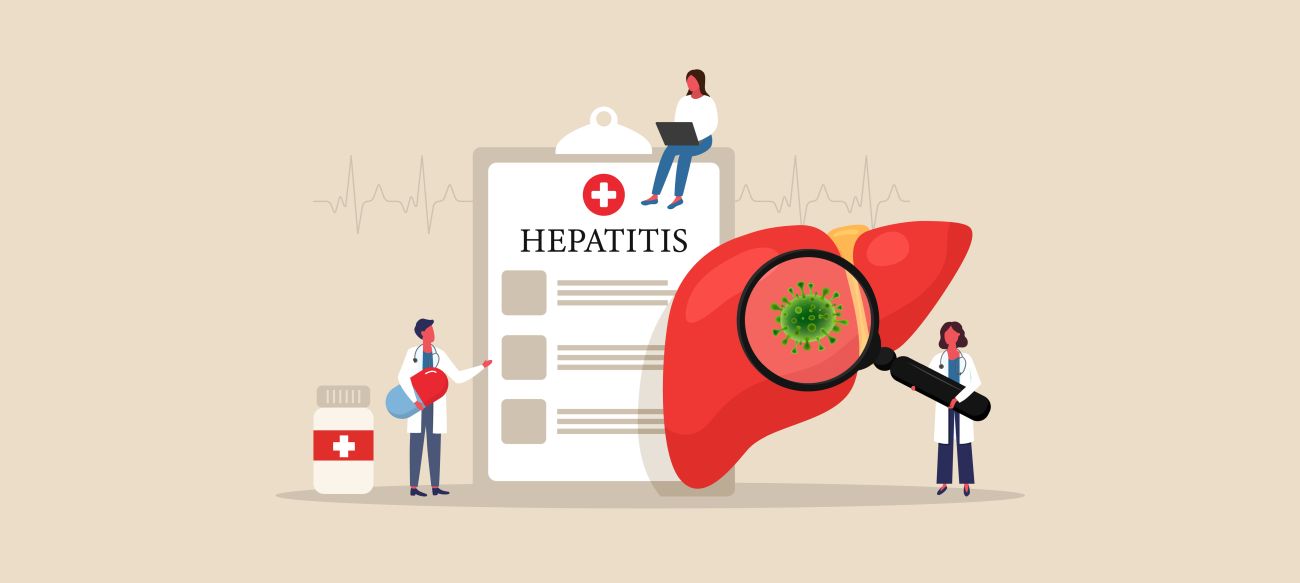Hepatitis is the inflammation of the liver. It commonly occurs due to viral infection. Understanding the disease and identifying its early signs is vital as unmanaged hepatitis can lead to cirrhosis and liver cancer. According to WHO, viral hepatitis causes 1.34 million deaths worldwide.
Hepatitis is divided into five categories, namely hepatitis A, B, C, D, and E. A different virus causes infection in each of these types. Hepatitis A, B, and C are the most common types of viral hepatitis, while the remaining two occur rarely.
The U.S. Department of Health and Human Services estimates that 2.4 million Americans have hepatitis C, whereas approximately 850,000 people have hepatitis B. According to the CDC, most cases of hepatitis go unreported. In 2018 alone, around 24,900 Americans were reported to have hepatitis A, 21,600 cases of hepatitis B, and 50,300 cases of hepatitis C.
Early Warning Signs of Hepatitis
Since many of the cases of hepatitis are left undiagnosed, understanding the early signs of the disease can prevent it from advancing to cirrhosis and cancer. Unfortunately, most hepatitis B and C symptoms do not appear until the infection has caused significant damage to the liver.
Regular health assessment, timely vaccination against each type of hepatitis, and appropriate preventive measures against the infection are more critical in preventing the disease.
Acute Hepatitis
Acute hepatitis can be assessed with early signs and symptoms. The warning signs of acute hepatitis are:
- Tiredness;
- Ongoing flu-like symptoms;
- Dark urine and pale stool;
- Recurring abdominal pain;
- Loss of appetite;
- Weight loss, and;
- Jaundice.
Although acute hepatitis usually resolves on its own, it may cause liver damage in some cases.
Chronic Hepatitis
In chronic hepatitis, symptoms are usually vague and develop gradually. However, it can cause severe liver damage in the long run.
How Is Hepatitis Diagnosed?
Your health care provider will conduct a thorough physical examination and run a series of tests to diagnose hepatitis. Your doctor will also ask about your medical history, drug use, and living standard to identify risk factors and determine whether you have viral hepatitis or non-infectious hepatitis.
Physical Examination
During a physical examination, your doctor will check your abdominal area for any pain and tenderness around your liver. Your skin and eye color can also help in identifying any possible signs of jaundice.
Liver Function Test
Liver function tests are the gold standard diagnostic aids in assessing your liver’s effectiveness. The tests require blood sampling and show increased levels of liver enzymes during infection.
Imaging
Abdominal ultrasound is a reliable diagnostic tool in determining liver function. It uses particular waves to create images of your organs, including the liver.
With an abdominal ultrasound, your doctor can see any possibility of liver enlargement or liver damage. It can also reveal the presence of liver tumors.
Liver Biopsy
A liver biopsy allows your health care provider to diagnose a range of liver disorders and determine the extent of liver damage or inflammation. It is a minimally invasive procedure in which your doctor acquires a sample tissue from your liver through a needle and examines it thoroughly to make a diagnosis.
How Is Hepatitis Treated?
Treatment of hepatitis is based on several factors, including whether the infection is acute or chronic and the type of hepatitis.
Acute Hepatitis
Most forms of acute hepatitis result from viral infection. Other less common causes of acute hepatitis include overdose of certain drugs, alcohol, and autoimmune disease. The two most common types of acute hepatitis are hepatitis A and E.
Treatment of acute viral hepatitis is mainly symptomatic. Your doctor may give you IV fluids and antiemetics to control excessive vomiting. The infection primarily resolves on its own over two to four weeks.
Hepatitis A
Most cases of acute hepatitis A develop acutely and last for a short period of time. Its treatment is supportive.
The disease can be prevented by getting the hepatitis A vaccination from a very young age.
Hepatitis B
Most cases of hepatitis B are chronic, meaning they require several months or even years to be treated thoroughly. Treatment of hepatitis B involves the use of specific antiviral medications.
The disease can also be prevented by getting the hepatitis B vaccination soon after birth.
Hepatitis C
Hepatitis C can be both acute and chronic. However, the infection mostly appears acutely and rapidly progresses to chronic hepatitis. Its treatment requires a combination of different drugs, including antiviral medications.
There is no vaccine for hepatitis C, However, it can be prevented by:
- Not sharing needles;
- Avoiding direct contact with blood and blood products, and;
- Practicing safe sex.
Hepatitis D
Hepatitis D is rare. Currently, there is no approved treatment for acute or chronic hepatitis D.
Hepatitis D can also be prevented to some extent by getting timely vaccination for hepatitis B.
Hepatitis E
Hepatitis E is one of the most common causes of acute viral hepatitis. Its treatment is based on supportive care.
Conclusion
Hepatitis is the leading cause of liver damage, cirrhosis, and liver cancer. Although many cases of acute viral hepatitis resolve on their own, some of them progress to chronic inflammation within no time.
Understanding the early signs of the disease can help you report any unusual symptoms to your health care provider and take appropriate care to limit its spread.
